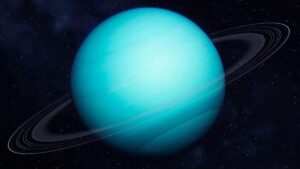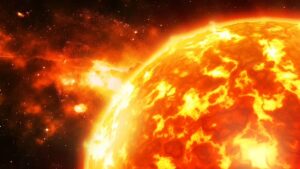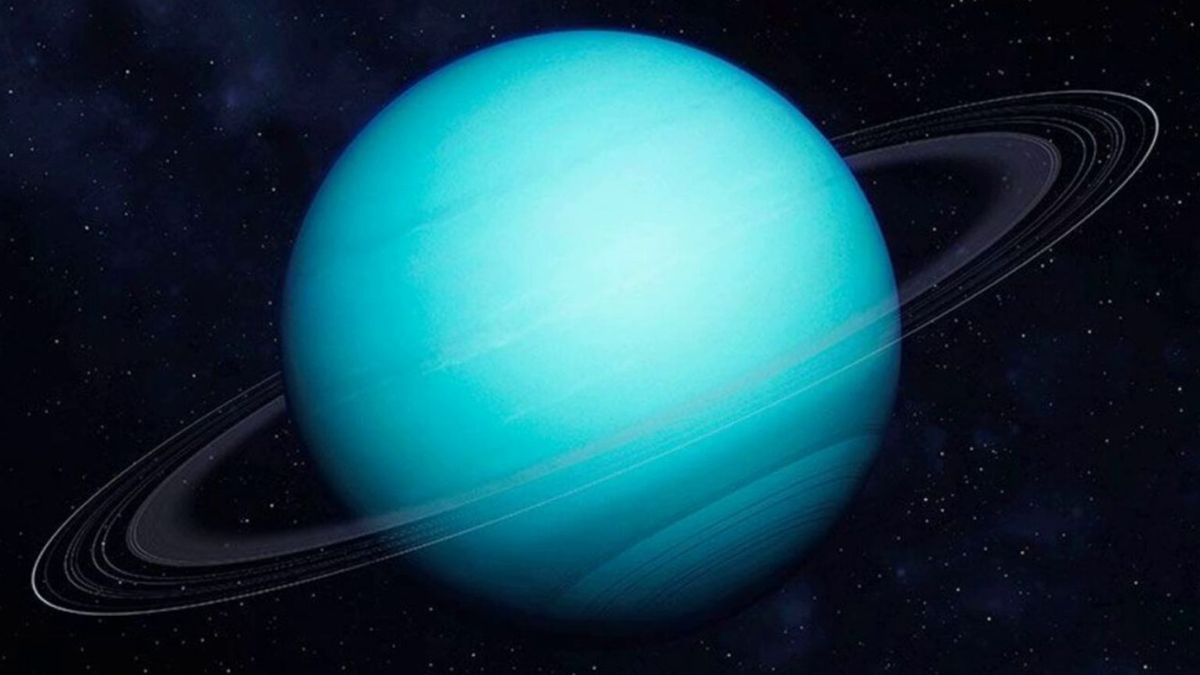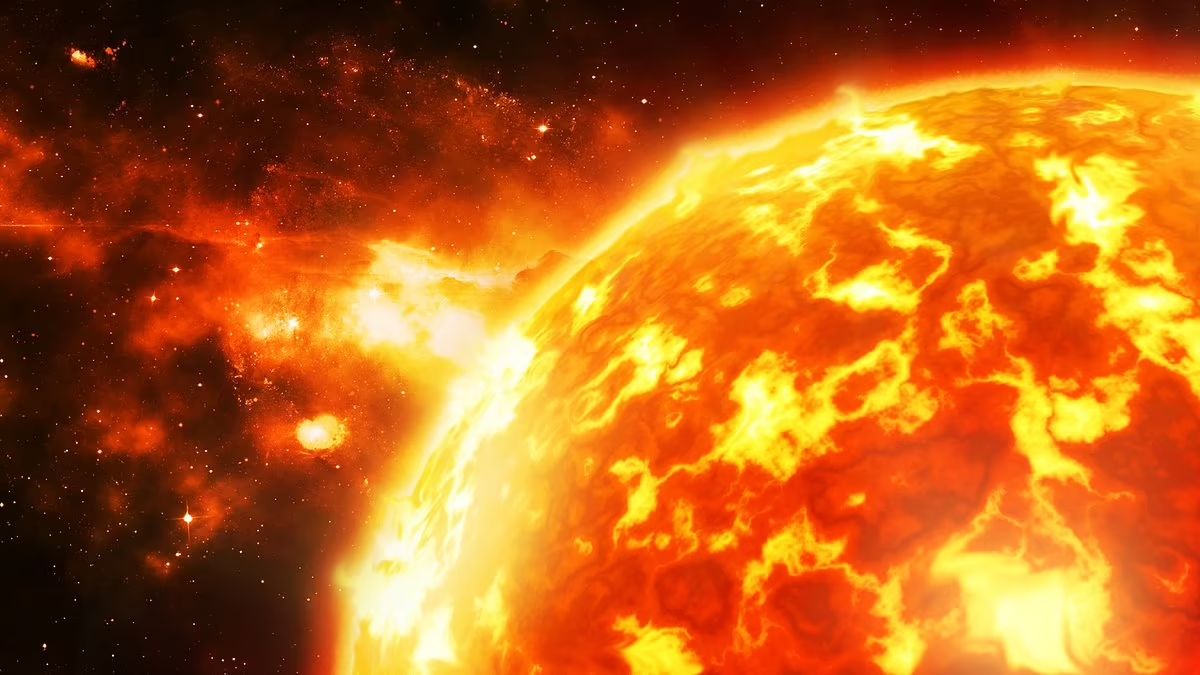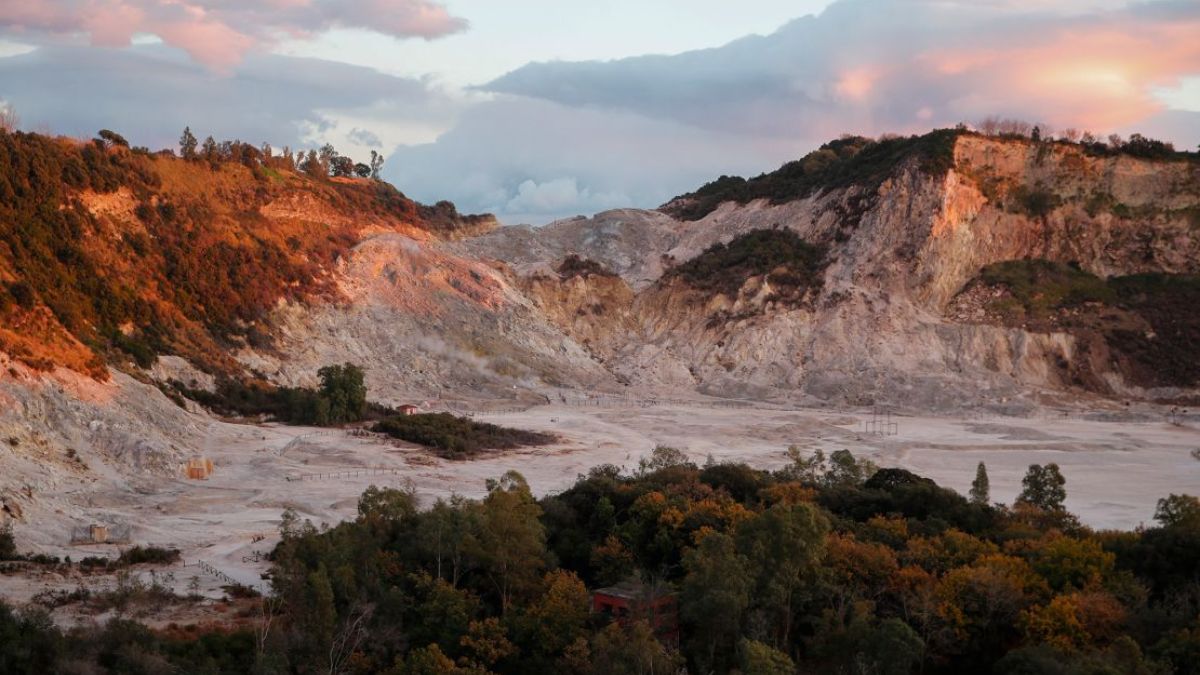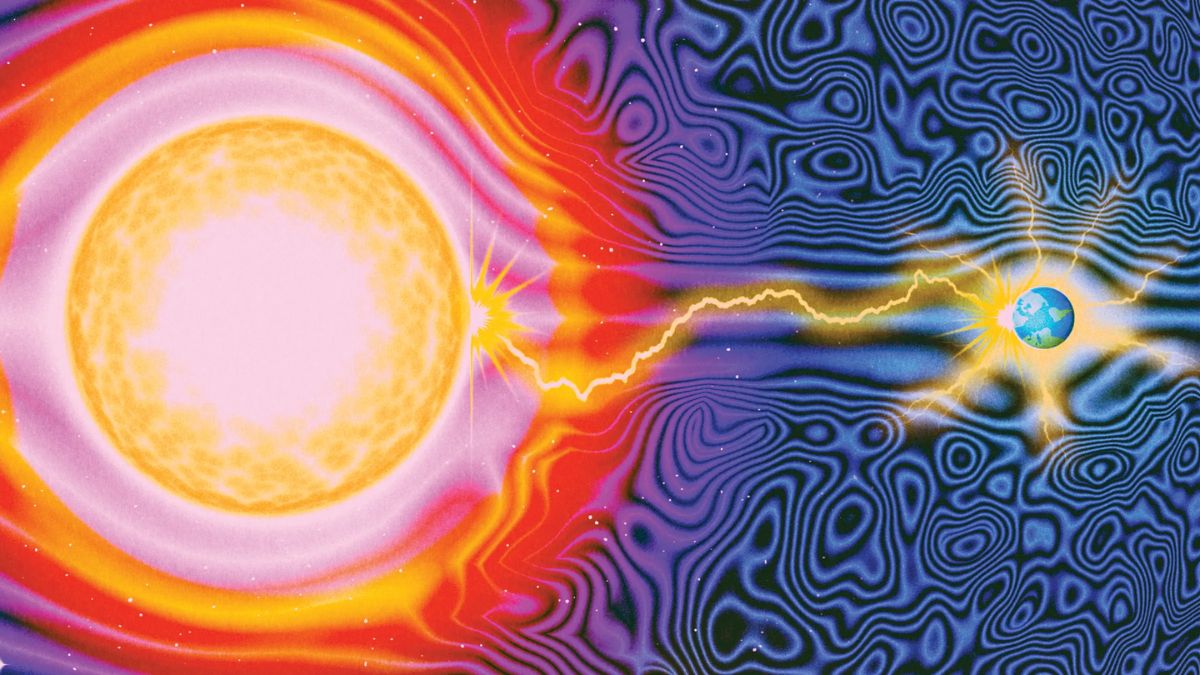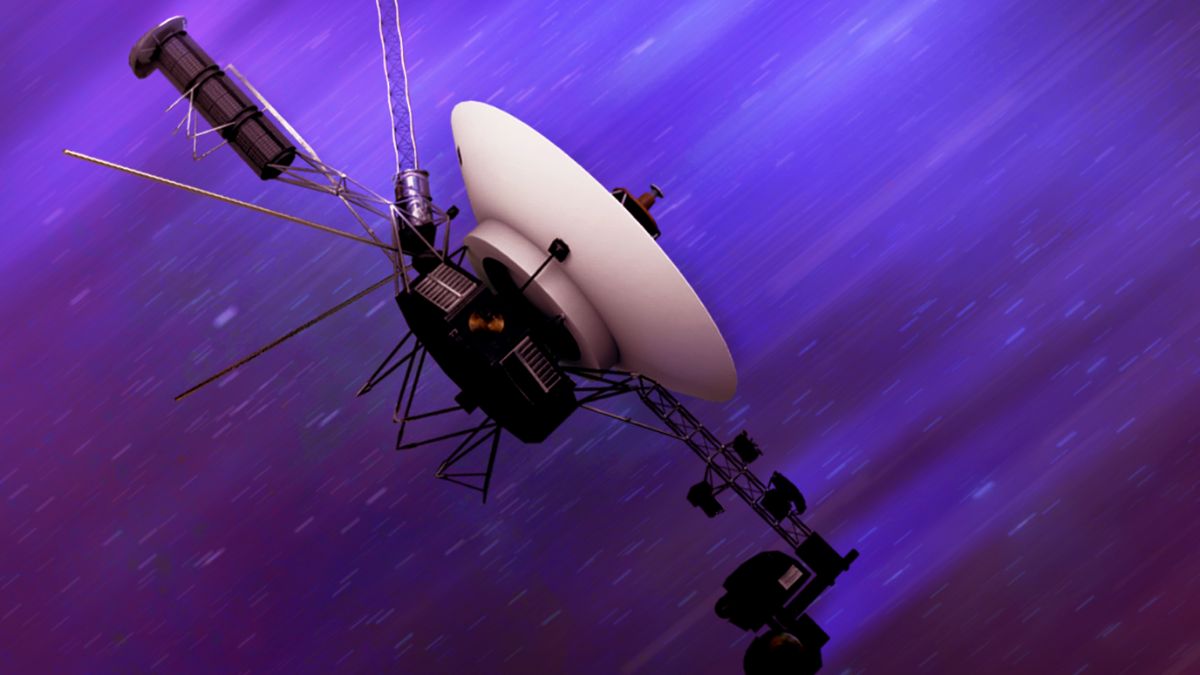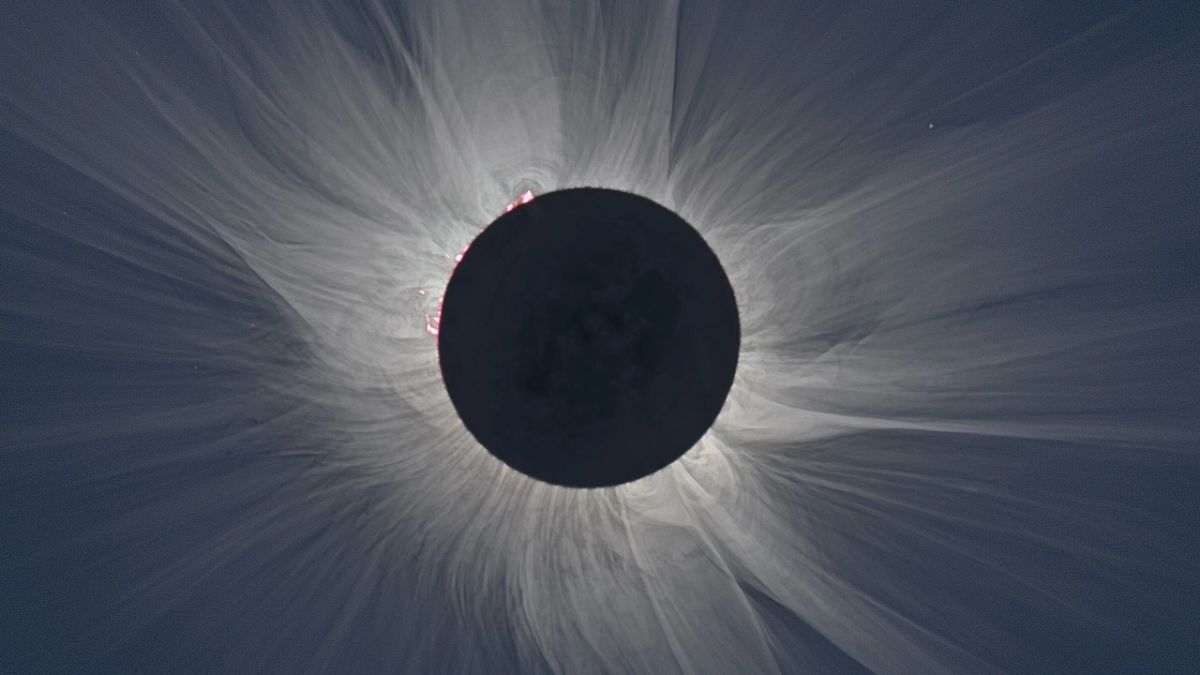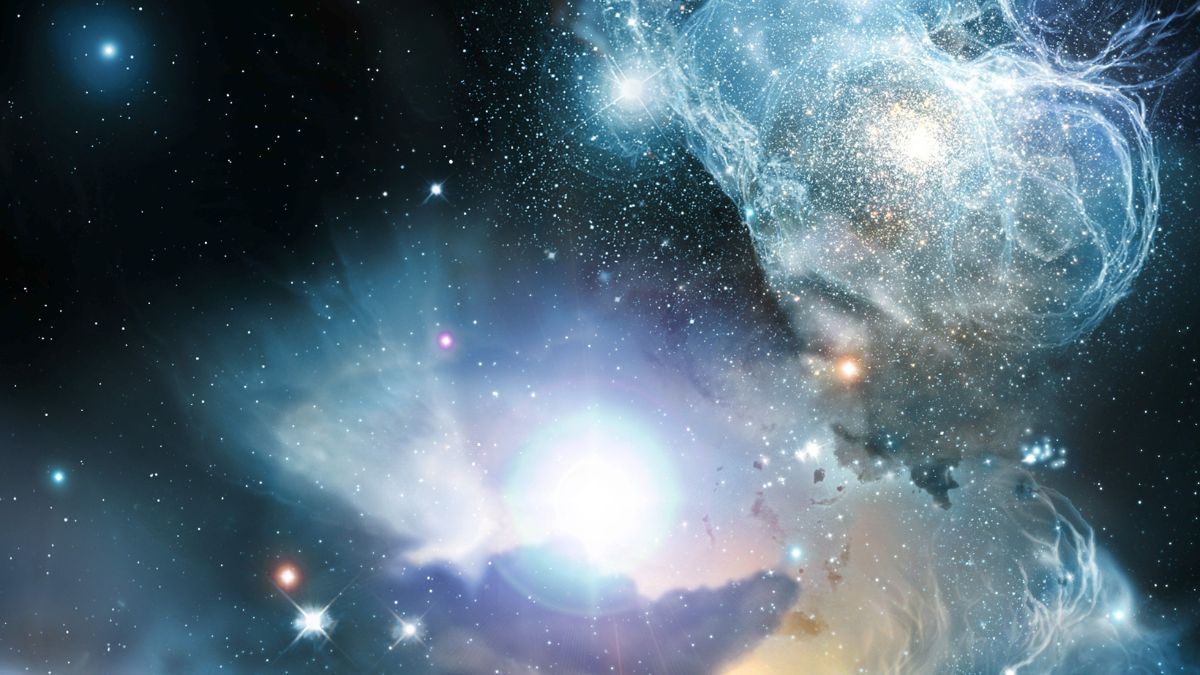NASA has pulled off another mind-blowing discovery. This time, scientists using the James Webb Space Telescope have confirmed the existence of crystalline water ice outside our solar system. Yeah, we’ve seen frozen water before—on Mars, on Europa, even on comets—but never beyond our solar bubble. This changes everything.
It’s the kind of finding that might reshape how we think about planet formation and even—yes—life itself. So, let’s break it all down and see why this is such a big deal.
Discovery
The big find happened around a young star called HD 181327, located 155 light-years from Earth. Compared to our mature 4.5-billion-year-old Sun, this star is a cosmic baby—just 23 million years old. But it’s already got a surrounding disk of space dust and icy debris, kind of like our own Kuiper Belt.
Scientists have always suspected that icy material might be floating out there in far-off solar systems, and now it’s finally confirmed. And not just any ice—crystalline water ice, the pure kind we also see in Saturn’s rings.
Method
So, how did they pull this off? The James Webb Space Telescope is the key player here. Equipped with the Near Infrared Spectrograph (NIRSpec), Webb doesn’t just take pretty pictures—it breaks down light into detailed data. That lets scientists identify the exact materials floating around in space, all by analyzing light signatures.
And guess what? The telescope picked up the unmistakable fingerprint of crystalline water ice mixed with space dust—like frozen snowballs riding dirty clouds.
Here’s what’s interesting: there’s hardly any ice near the star, but in the outer regions? Around 20% of the dust is combined with water ice.
Ice Distribution Table
| Region around HD 181327 | Water Ice Presence |
|---|---|
| Inner zone (close to star) | Almost none |
| Outer zone (Kuiper Belt-like) | Around 20% |
That uneven spread raises two possibilities: either ultraviolet radiation from the star is melting the nearby ice, or ice never formed in those warmer inner areas at all. Either way, this gives us valuable insight into how planetary systems develop.
Telescope
None of this would’ve been possible without the powerhouse that is the James Webb Space Telescope. A joint mission between NASA, ESA (European Space Agency), and CSA (Canadian Space Agency), Webb launched in 2021 and is now parked out in space with one goal: unraveling the mysteries of the universe.
Unlike Earth-based telescopes or even Hubble, Webb uses infrared light to look much deeper—and further back in time—than ever before. It’s like giving astronomers night vision goggles to scan the cosmos. And in this case, those goggles spotted icy clues in a faraway star system.
Teamwork
The research was led by Chen Xie of Johns Hopkins University in Maryland, but this wasn’t a solo mission. Spanish astronomer Noemí Pinilla-Alonso from the Institute of Space Sciences and Technologies of Asturias also played a major role. It’s a reminder that space science today is truly a global effort, pulling together the best minds from all over the world.
Life
Alright, here’s the question we’re all thinking—does this mean life could exist out there?
Not quite. While the discovery of water ice is huge, it’s still just one piece of the puzzle. Water is essential for life as we know it, but that doesn’t mean life is guaranteed. What it does suggest is that the conditions for life might be more common than we thought.
Even more fascinating, this finding might help us understand how Earth got its water in the first place. Was it delivered by icy comets? Or did it form from cosmic ice like this? Studies like these bring us a step closer to the answer.
So yes, this discovery is epic. It’s not just about finding ice—it’s about realizing we may not be alone in the cosmic playbook of planet-building. We’ve always believed we came from water… and now, it turns out, so did stars 155 light-years away.
FAQs
What star was water ice found around?
HD 181327, a young star 155 light-years from Earth.
How old is HD 181327?
It’s about 23 million years old, very young astronomically.
What telescope made the discovery?
The James Webb Space Telescope using NIRSpec.
Where was most of the ice located?
In the outer region, similar to our Kuiper Belt.
Does this confirm alien life?
No, but it shows conditions for life may be common.


